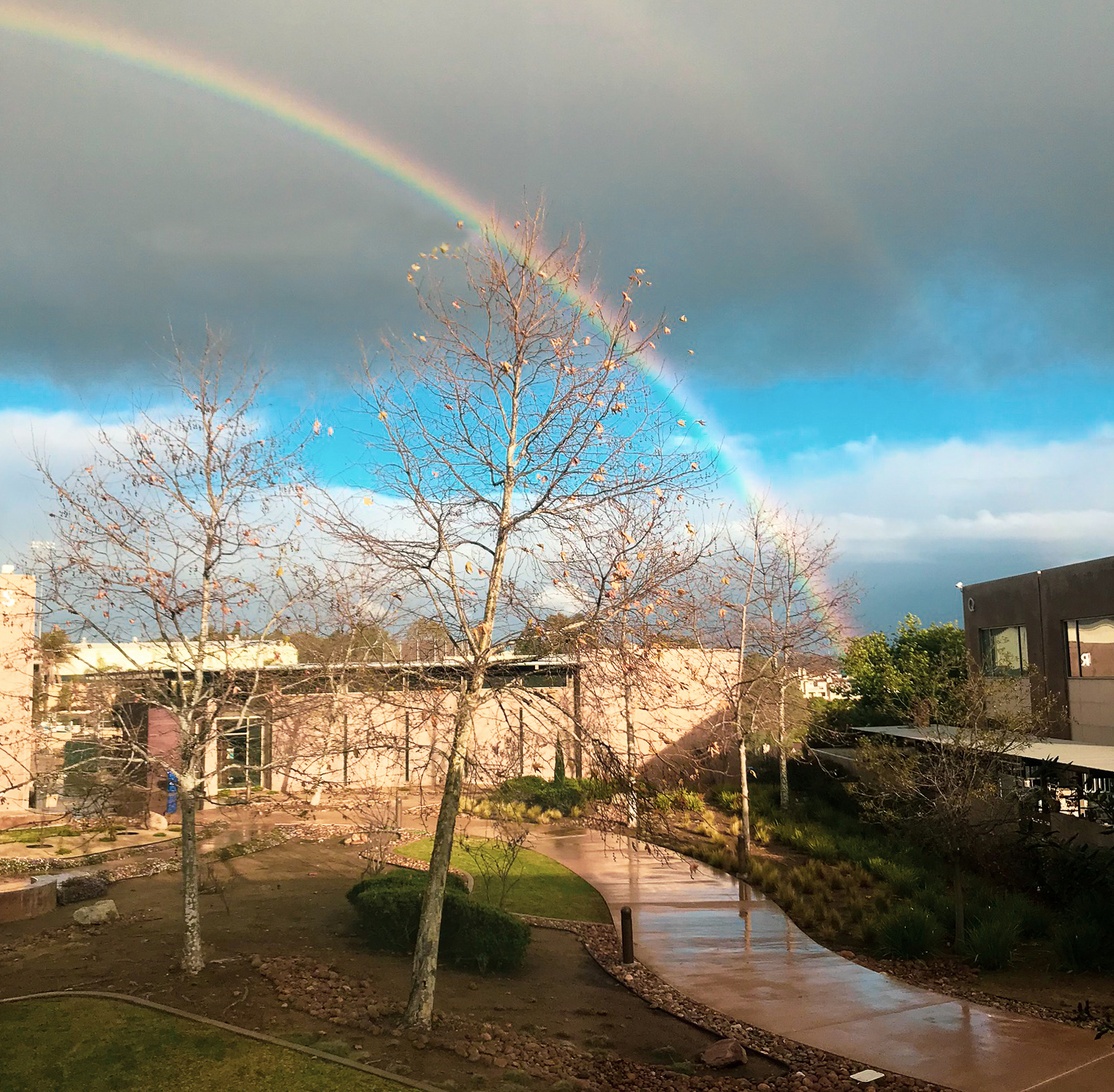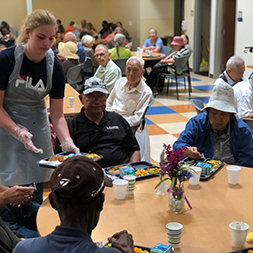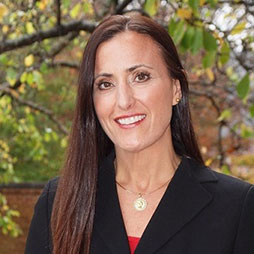



by Head of Upper School Dr. Monica Gillespie
“The thing to do, it seems to me, is to prepare yourself so you can be a rainbow in somebody else’s cloud. Somebody who may not look like you. May not call God the same name you call God—if they call God at all,” she chuckled. “I may not dance your dances or speak your language. But be a blessing to somebody. That’s what I think.”
~Dr. Maya Angelou
I recently saw a double rainbow grace our San Diego sky after one of the storms, and it reminded me of the words of one of my favorite poets, Dr. Maya Angelou “be a rainbow in somebody else’s cloud.” What a beautiful idea and what a daunting challenge.
This very idea is at the core of Parker’s mission as we seek to prepare our students “to make a meaningful difference in the world”—“to be a rainbow in somebody else’s cloud.” As adults, parents, and educators, we realize the depth of that calling and the requisite courage and humility it takes to achieve. We can all think of times when we were more like thunder and lightning than rainbows. It’s not easy, but it is a worthwhile and noble goal.
So, how do we support our students, your children, in this journey to make a meaningful difference in the world? By working in partnership to support their development of a sense of purpose. Building on my message in January, we know that adolescents thrive when they have a sense of purpose. One essential aspect of purpose is “beyond-the-self motivation” as manifest when “we integrate our compassion for others, sense of social responsibility, and moral virtue with our thinking about who we want to become and what we want to accomplish in life” (Malin, 2018).
Our students are finding their purpose. One of the many ways we support their growing sense of social responsibility and understanding of how they can make a meaningful difference is through community engagement. Students engage in a process of learning about issues and solutions and reflecting upon their experiences. As they develop their sense of purpose, many students seek to answer the question, “What would I change about the world if I could change anything?” (Malin, 2018) For some students, the answer is evident early in their high school years while others need to spend more time learning about issues and considering their core values.
What we know from research and our experience working with teenagers is that “when [students] see that they can make a difference, students come to see themselves as people who can and should have a positive impact in their world.” They come to truly know—to believe—that they can “be a rainbow in someone’s cloud.”
References
Malin, H. (2018). Teaching for purpose: Preparing students for lives of meaning. Cambridge, MA: Harvard Education Press.
